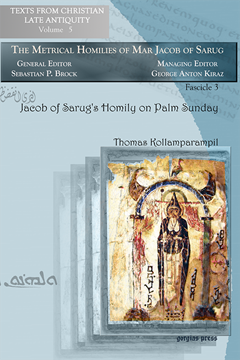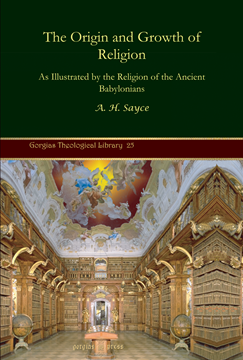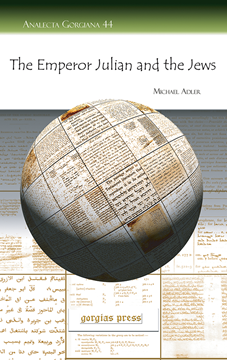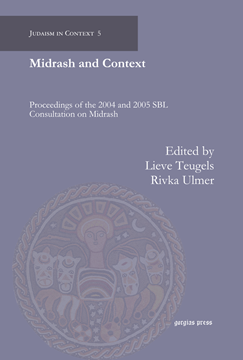Jacob of Sarug’s Homily on Palm Sunday
Metrical Homilies of Mar Jacob of Sarug
Translation and Introduction by Thomas Kollamparampil
Series: Texts from Christian Late Antiquity 5
ISBN: 978-1-59333-737-7
This edition of Mar Jacob of Sarug's (d. 521) homily for Palm Sunday discusses Jesus’ entry into Jerusalem. The homily admonishes the hearers to perceive the benevolence of the divine self-abasement and recognize the Mighty One on the humble streets of Jerusalem. The volume constitutes a fascicle of The Metrical Homilies of Mar Jacob of Sarug, which, when complete, will contain the original Syriac text of Jacob's surviving sermons, fully vocalized, alongside an annotated English translation.
$30.00 (USD) $18.00 (USD)
The Origin and Growth of Religion
As Illustrated by the Religion of the Ancient Babylonians
By A. H. Sayce
Series: Kiraz Theological Archive 25
ISBN: 978-1-59333-740-7
Originally published as the Hibbert Lectures of 1887, this series of essays covers more than the title suggests. The work of an early explorer of Assyriology, this book traces many of the more familiar motifs and themes from ancient religion back to the ancient Babylonians.
$218.00 (USD) $130.80 (USD)
Kings of the Hittites
The Schweich Lectures 1924
Series: Analecta Gorgiana 43
ISBN: 978-1-59333-742-1
Copiously illustrated, this set of three lectures on the Hittites of southern Anatolia is a valuable introduction to the sites of Zenjirli, Sakjegeuzi, and Carchemish. Chosen because of the importance of southern Anatolia to the biblical record, these locations are explained from an archaeologist’s viewpoint and presented in an easily readable format.
$48.00 (USD) $28.80 (USD)
The Emperor Julian and the Jews
Series: Analecta Gorgiana 44
ISBN: 978-1-59333-857-2
This study explores the Emperor Julian's actions in regards to the Jews, especially his advances toward rebuilding the Jewish Temple. It offers the reader an insight into an aspect of Julian’s reign not often examined by Christian historians.
$45.00 (USD) $27.00 (USD)
Psychology of Prophecy
A Study of the Prophetic Mind as Manifested by the Ancient Hebrew Prophets
ISBN: 978-1-59333-743-8
Kaplan’s inaugural study of the psychological basis of prophecy is a landmark in the history of prophetic exploration. Setting the standard for future studies of the prophets, this remarkable book covers the various conceptions of prophets and their attendant phenomena of premonition, revelation, dreams, visions, ecstasy, and inspiration.
$123.00 (USD) $73.80 (USD)
Midrash and Context
Proceedings of the 2004 and 2005 SBL Consultation on Midrash
Edited by Lieve M. Teugels & Rivka Ulmer
Series: Judaism in Context 5
ISBN: 978-1-59333-582-3
A collection of seven groundbreaking essays on Rabbinic midrash and related texts by a new generation of erudite scholars combining the themes of the 2004 and 2005 SBL midrash sessions: “Jewish and Christian Hermeneutics” and “Midrash and Cultural Studies,” this book is a must have for clergy, students, scholars, and laypersons interested in deepening their understanding of Rabbinic and Patristic biblical interpretation.
$167.00 (USD) $100.20 (USD)





